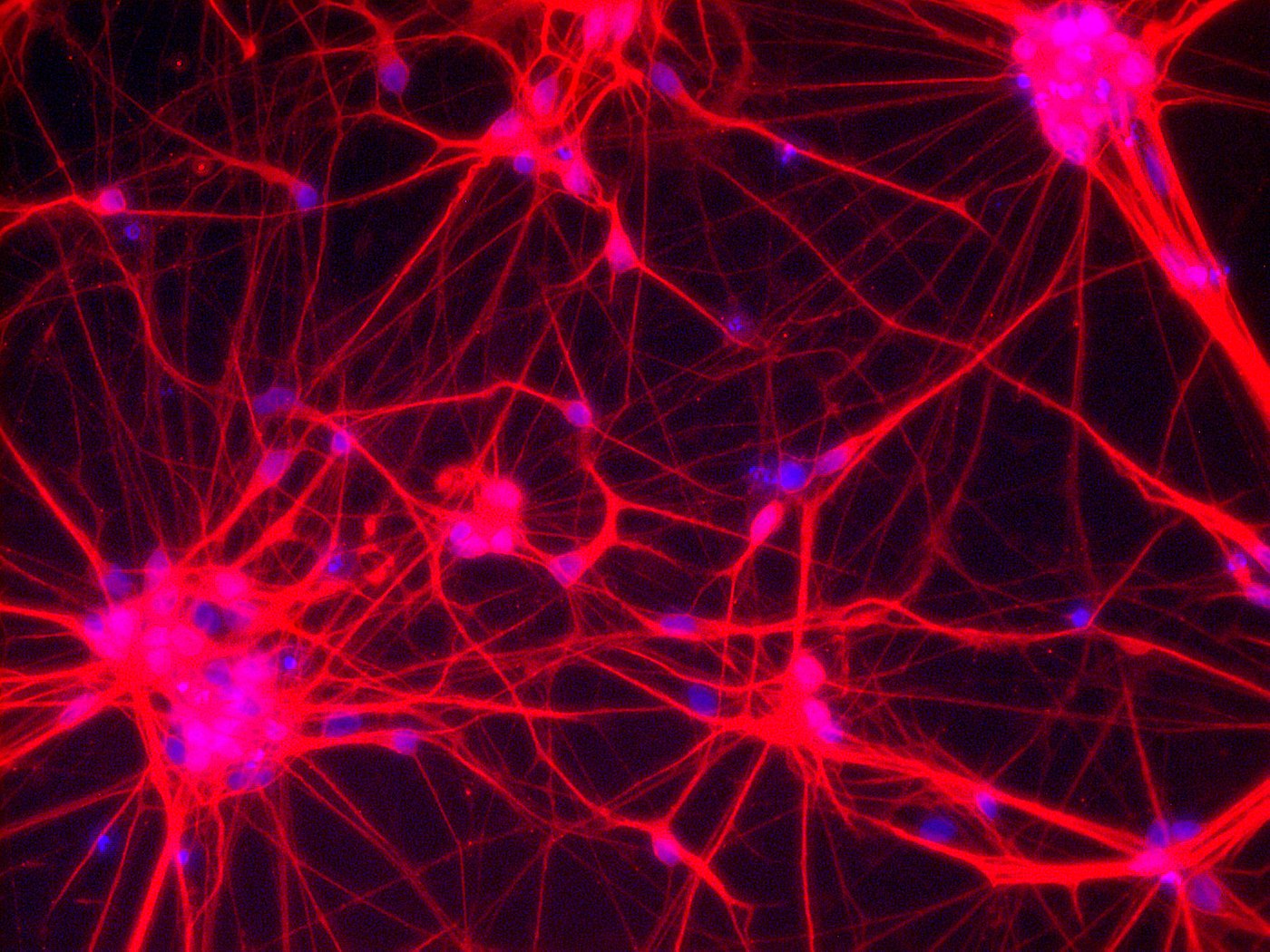
Neurone - Netzwerk aus Nervenzellen (Blau: Zellkern; Rot: Nervenzellen) [Quelle: Institut für Transfusionsmedizin, UK Essen]
Human pluripotent stem cells are one of the key sources investigated worldwide in the search of the proverbial ‘fountain of youth’ given that every tissue/organ in the body arises from them. By mimicking the signals in a developing embryo in a dish, pluripotent stem cells can be coaxed into activating the genetic networks instructing them to differentiate into functional human cells, which have unlimited therapeutic potential. Realizing this potential, multiple clinical studies are currently under way including cell replacement therapies to improve life-quality in aged individuals. However, our understanding of the genetic networks that control the differentiation processes that lead to the generation of functional human cell types during embryonic development is far from complete. Comprehensive insights on the key genetic determinants of cell-fate decisions and their hierarchy during differentiation is pivotal in understanding embryonic development and to ensure the advancement of safe approaches to generate mature, functional cells for cell-replacement therapies.
In this study, combining massively parallel transcriptome sequencing techniques with defined differentiation methods to derive mesodermal lineages from pluripotent stem cells, we identified and defined a currently unknown class of genes called ying yang lncRNAs (yylncRNA). This developmentally specialized class of genes, that lack the ability to code for proteins, is organized in the mammalian genome in a head to head fashion with key regulators of embryonic development. Indicating the central role of yylncRNAs in regulating cell fate decisions, we report the molecular and functional importance of yylncT, a yylncRNA encoded from the BRACHYURY (T) locus. BRACHYURY is the master regulator of mesoderm development, the lineage that gives rise to organs including the heart, vasculature and skeletal muscles (tissue types that are severely affected by aging). Our data indicate that yylncT is essential for mesoderm differentiation of human pluripotent stem cells. It acts as a gatekeeper of the genetic locus that encodes BRACHYURY. In the absence of yylncT, human pluripotent stem cells fail to acquire mesoderm fate leading to a molecular collapse resulting in their apoptosis. Mechanistically, yylncT defends the yylncT/T locus from unwanted DNA methylation of this locus by directly binding to the de novo DNA methyltransferase, DNMT3B, and inhibiting its function locally.
De novo DNA methylation facilitates the stabilization of cellular identities during embryogenesis, while loci encoding regulators of developmental cell fate decisions remain hypomethylated. We reveal a long non-coding RNA mediated regulatory layer essential for safeguarding these loci from aberrant DNA methylation.
Corresponding publication: Frank et al. (2018) yylncT Defines a Class of Divergently Transcribed lncRNAs and Safeguards the T-mediated Mesodermal Commitment of Human PSCs, Cell Stem Cell, in press
More about the Junior Research Group of Leo Kurian.
The Kurian lab is supported by the NRW Stem Cell Network Independent Group Leader Grant, CECAD, German Heart Association (DZHK), Else Kröner-Fresenius Stiftung (EKFS), Deutsche Forschungsgemeinschaft (DFG) and University of Cologne.